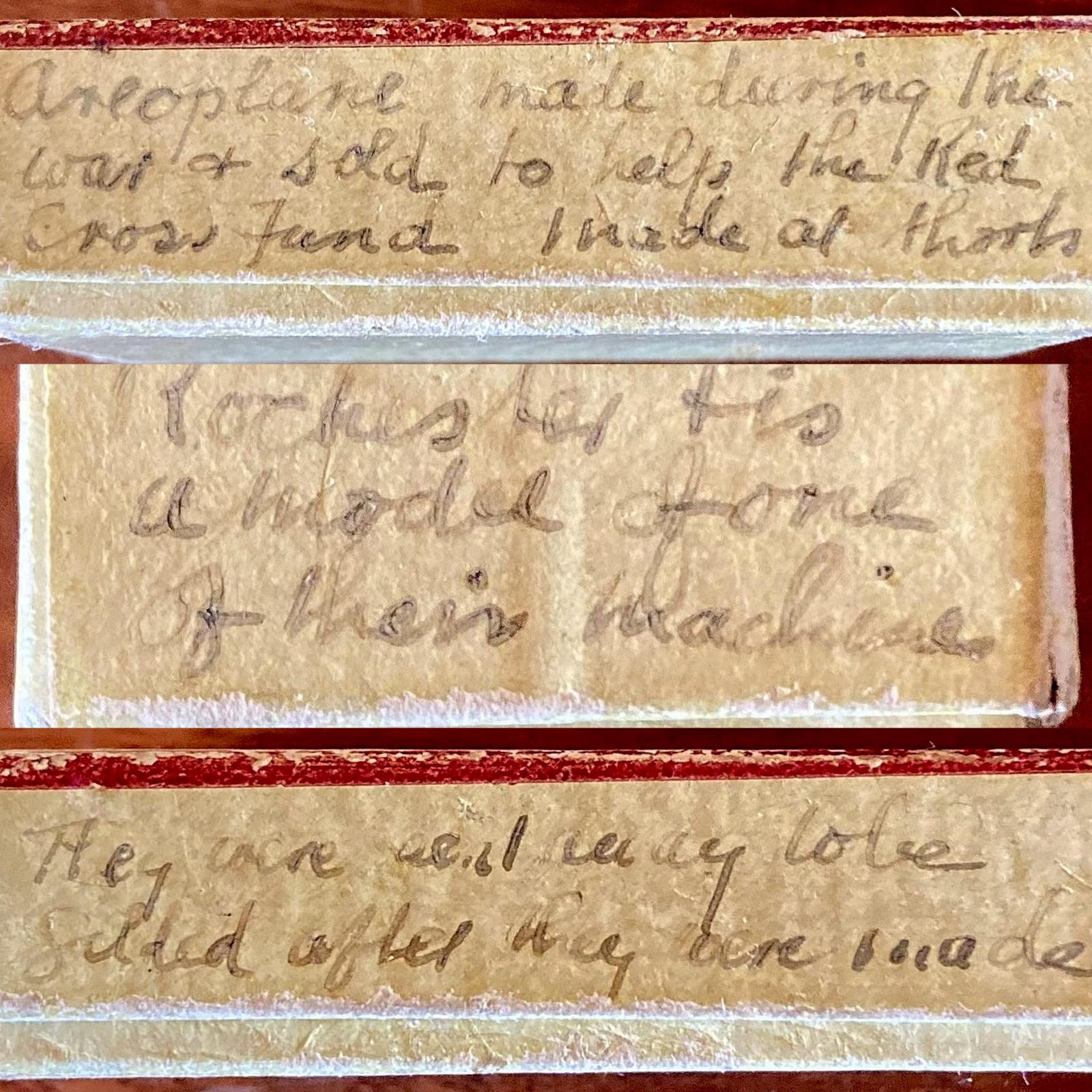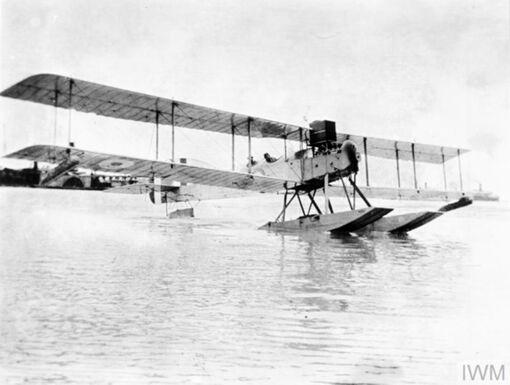Boxed Short Brothers plane fundraising brooch
c. 1915Metal brooch in the shape of a World War One era Short Brothers 184 floatplane as viewed from below. The large central twin floats and the smaller auxiliary wingtip floats are visible.
The metal has been engraved or etched in great detail with striated lines present on the biplane wings and fuselage. A roundel can also be seen.
The metal itself seems to be gold in colour with a black layer over the surface.
The reverse of the badge has a brooch fitting with a hinged pin which is inserted into a metal holder on the opposite side for attachment.
There is no visible maker's mark.
The brooch is contained within a jeweller's box made from cream coloured card with brick red edges on the lid. The name and address of the jeweller are printed in black on the top of the lid.
Three of the four sides of the lid have been written on in dark grey ink, telling the story of the brooch - where and why it was made.
The Short 184 was arguably the most important British floatplane of World War One, designed for reconnaissance, bombing, and torpedo-carrying duties. It featured folding wings for storage on early seaplane carriers and a twin-float undercarriage design with auxiliary wingtip floats.
Among its achievments, it was the first aircraft to sink a ship with an air-launched torpedo in action, and the only British aircraft to participate in the Battle of Jutland, in a reconnaissance role.
It was designed by Horace Short of Short Brothers, and first flew in 1915. It was attached to the Royal Naval Air Service.
Due to its success, over 900 units were eventually built, many by subcontractors like Westland Aircraft and Supermarine. It remained in service until the early 1920s, primarily for anti-submarine patrols and later for mine-spotting duties after the war. A photo of a Short 184 taken from the Imperial War Museum website is included to show how well the brooch has been crafted.
The brooch appears to have been made at the Short Brothers factory in Rochester from base metal, after which it was sent to be gilded in 9 carat gold. A collage showing the front and back of the gilded variety is included, with the images taken from Sally Bosleys Badge Shop website. This confirms what is written on the jeweller's box. It may be that the jeweller, C.H. Spurge of Gillingham, Kent, was responsible for the gilding and sale of the brooches, proceeds of which went to the British Red Cross.
A photo of a Short 184 taken from the Imperial War Museum website is included to show how well the brooch has been crafted.
Details
Details
On lid of jeweller's box:
"WATCHMAKER
AND
JEWELLER
C.H. Spurge
52
BALMORAL RD
GILLINGHAM, KENT"
On front side of box lid:
"Areoplane [sic] made during the
war 7 sold to help the Red
Cross Fund. Made at Shorts"
On end of box lid:
"Rochester. tis
a model of one
of their machines"
On back side of box lid:
"They were sent away to be
gilded after they were made"
Other items from Recollections of War
- Volunteer Air Observers Corps certificate - Miss M.D.A. Davidson
- Volunteer Air Observers Corps certificate - Mr J.H. Davison
- Volunteer Air Observers Corps badges
- Wattle Day 1915 fundraising ribbon
- 'Souvenir of Wattle Day 1915' booklet
- Wattle Day 1916 fundraising ribbon
- WWI fundraising ribbon - Rule Britannia, The Lion's Cubs
- WWI fundraising ribbon - For Kith and Kin, Red Cross Day 1915
- WWI fundraising ribbon - Remember our boys at the Dardanelles
- WWI fundraising ribbon - Lavender Day, ANZAC Club and Huts
- WWI fundraising tag - Queensland's Heroes' Day 1917
- WWI fundraising tag - Railway Soldiers Day Patriotic Fund 1918



Scan this QR code to open this page on your phone ->
